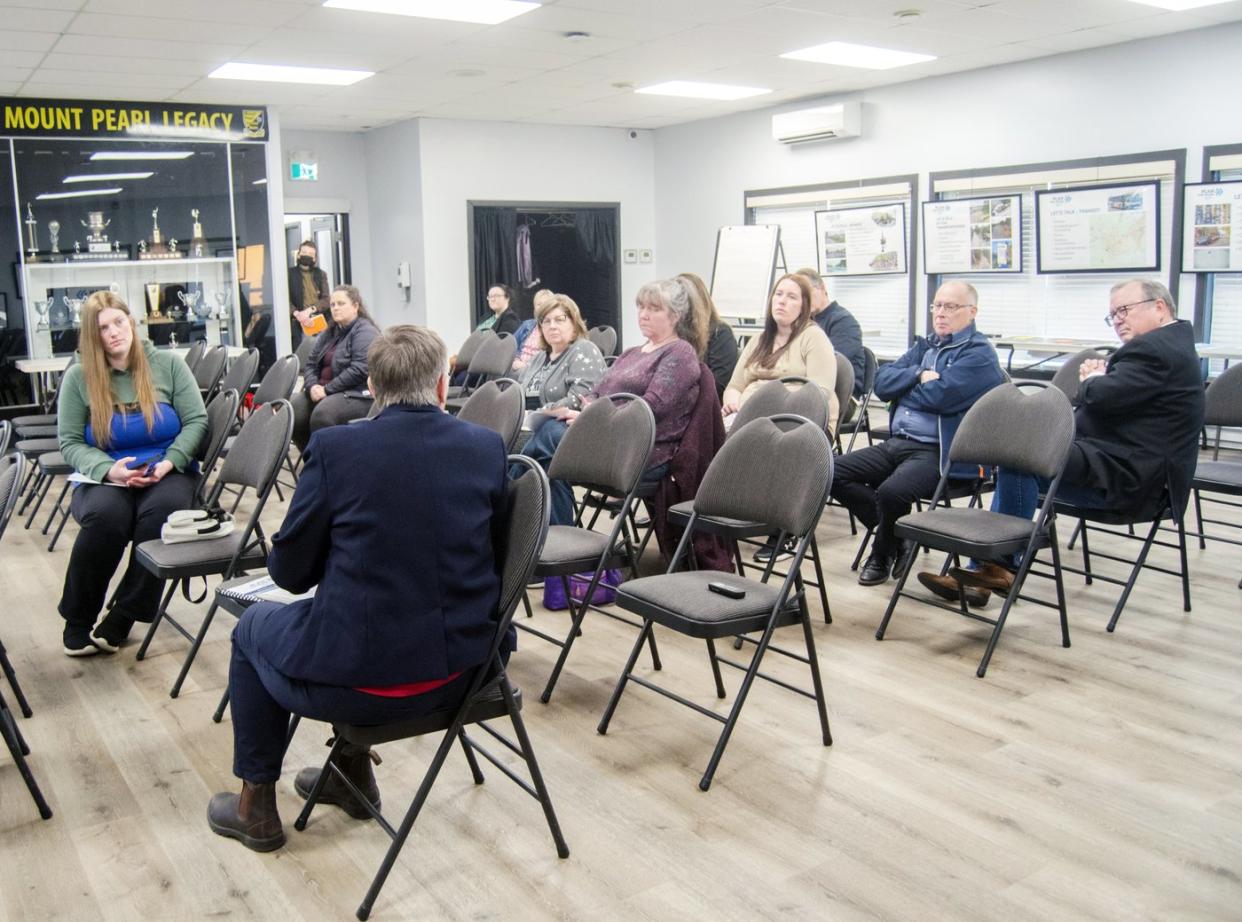Traffic congestion, community gardens raised at Mount Pearl forum

The City of Mount Pearl is refreshing its municipal plan with transportation being a key focus, and held a public forum at the Soccer Hut late last month to discuss it and gain insights from its residents.
Anna Myers from Tract Consulting and Roger Boychuck of Fathom Studios are spearheading work on the updated municipal plan and integrated transportation plan, and also led the evening’s discussion.
Myers noted the aim is to make sure land uses are consistent and effective, and enhance the lives of residents. The Municipal Plan will also be adapted to meet changing conditions locally, regionally, nationally and internationally such as housing and climate change.
Myers quoted statistics that will be considered in the plan, such as that 40 per cent of the city’s household incomes are over $100,000, and 45 per cent of the population is able to get to work in 15 minutes or less.
“You want young families to come into your community in order to add vibrancy to your community,” Myers said.
In addition to meeting with residents, the planners will meet with special interest groups who want a say in how the city is planned.
“There are groups of interest in your community that we need to talk to to find out what it is that they need in the city of Mount Pearl,” Myers said.
With transportation planning on her mind, resident Erin Skinner wondered if schools are among the groups that will have a say. “We have such a large subset of children in our community compared to other regions in the Northeast Avalon,” she said.
Myers said they weren’t planning to meet with schools due to them being under the jurisdiction of the provincial government.
Mayor Dave Aker agreed with Skinner’s concerns.
“Erin makes a good point. Our plan could lead to their plan,” he said.
Skinner reiterated the presence of children moving through the community, whether on the city’s trails or along its roads, should be in the conversation.
“You will see many children biking to school and families walking to school,” she said. “From a transportation and active mobility perspective, I think that is worth considering.”
Boychuck noted that whether or not schools are a formal stakeholder group in the conversation, it remains an important piece of the conversation.
Skinner also wondered what sort of influence the City has with Metrobus to get better service in the area.
“Is the point moot at the end of the day?” she asked. “What is council's level of authority over that regional transit? And if it’s not significant, should we be looking at other alternatives?”
Aker acknowledged that public transportation needs to be examined.
“We may have to be bold, or through the feedback just like you’ve given, and say that there needs to be a true regional transit system, as opposed to little spikes connected to a St. John’s transport system,” he said. “And I mean that respectfully to St. John’s. There’s been a huge evolution from here to Seal Cove in the last 25 years.”
Boychuck affirmed the consensus seems to be Metrobus service in Mount Pearl needs improvement.
“There’s probably something that should be done,” he said. “The demands of the transit system have really significantly changed in the last five years.”
Resident Christine Hennebury raised her own transportation concerns, including intense school zone congestion at peak times in her area, and a lack of access to trails and crosswalks in winter due to snow.
“My street gets really crowded as people don’t want to go on Munden Drive to drop their kids off at St. Peter’s Junior High, or they park next to the stop sign at the end of my road so it looks like somebody is stopped at a stop sign,” she said.
During the course of the meeting, pro-Palestine protestor Emma Martin stood quietly at the edge of the room with a sign that read, “Free Palestine. Land back.” She asked if there had been any “indigenizing or decolonizing lenses” added to the plan.
“I do think it’s important for a land-use meeting to acknowledge the land that we’re on,” she said.
Myers explained the planners’ process.
“When we start the plan we send in a notice to the Provincial Government, and it goes to Indigenous Affairs and they apply that lens and let us know if there is anything of concern,” she said.
Resident Mary Elizabeth Furlong asked about the possibility of incentivizing community gardens or designating more places for them. “Especially in regard to rising food costs right now,” she said.
“Anna is going to go through re-writing the zoning bylaws to make things happen here, and to be able to enable them,” he said.
Aker welcomed all the resident feedback.
“It’s nice to know what the community wants,” he said. “I don’t think families know now how food is produced.”
Myers said that while half the comments she gets in similar planning surveys are not able to be worked into the plan at hand, they remain important messages to council.
“Councils want to hear what the people are saying, and are taking the time to write,” she said.
Chad Feehan, Local Journalism Initiative Reporter, The Shoreline News


